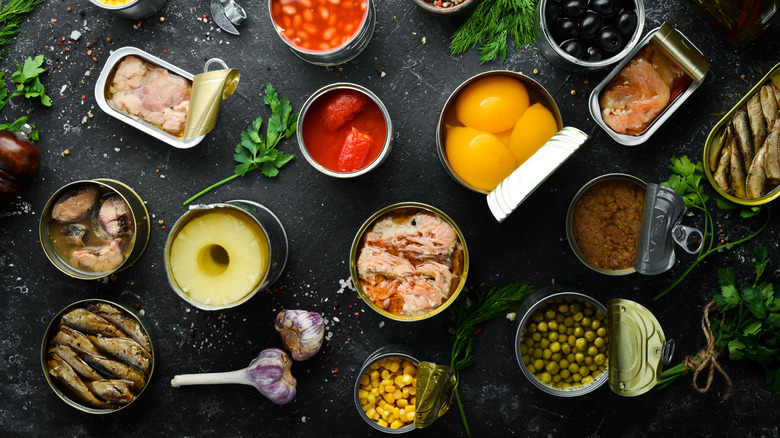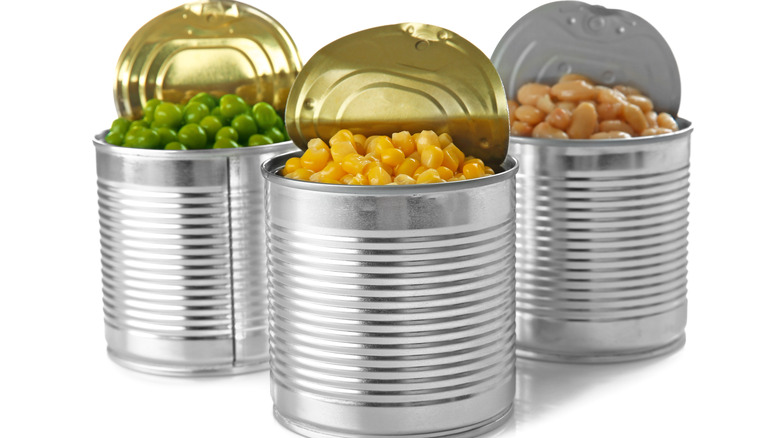What Does Vacuum Packed Mean On A Canned Food Container?
Food preservation is important to help prevent food waste and vacuum packaging is a common way to do this. The process removes the oxygen from the packaging, per the National Center for Home Food Preservation. This helps to preserve the shelf life as exposure to oxygen can cause foods to decay quicker (due to the fact that bacteria that causes food to spoil thrives on air). Vacuum packaging also helps preserve the freshness of non-perishable foods like crackers and nuts.
While there are products on the market that allow you to vacuum pack foods at home, many products available at the store are already vacuum packed. The most common might be meat, but Science Direct explains that dry goods like coffee, pasta, and yeast can also be packaged in this manner. One item you might not associated with vacuum packing is canned goods. So if a can is labeled vacuum packed, what does that mean?
Vacuum packed technology
A can that is labeled as vacuum packed, according to OldWays, has less water and packaging. This technology was developed in 1929 and allows companies to fit the same amount of food in a smaller package. Canned corn is often packed this way. Both Del Monte and Libby's, companies who produce canned goods, say they vacuum pack their corn within hours to preserve the flavor and crispness.
All canned goods have a partial vacuum, Britannica states, but only certain products are vacuum packed. Amid the canning process, the contents expand because of the heat and force out any remaining air. Then after the contents cool, the contraction produces that partial vacuum. But for a can to be vacuum packed, it requires another machine — a vacuum-can sealing machine. So next time you go to the grocery store and see a can labeled vacuum packed, you can enlighten the person with you or the stranger next to you about what this means.

